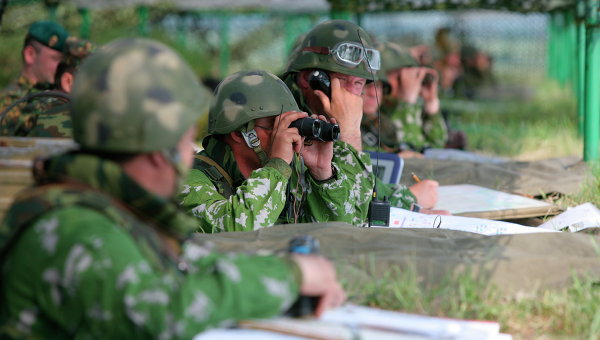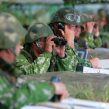
Russia’s Armed Forces: Reflections On 2012
Publication: Eurasia Daily Monitor Volume: 10 Issue: 2
By:

As the Russian political-military leadership faces a new year filled with many of the same issues that lay unresolved at the start of 2012, it is likely that the twists and turns of the “reform” associated with former Defense Minister Anatoly Serdyukov will present a constant source of revision. Indeed, developments in the “reform” and modernization of Russia’s conventional Armed Forces were largely over-shadowed by the downfall of Serdyukov and his replacement in November 2012 with Sergei Shoigu; media and some expert commentary attributed this to the corruption scandal around Oboronservis, which had become closely linked to the defense minister as it seemed to be his pet project. What these observers largely overlooked was the resounding victory for the beleaguered domestic defense industry as Putin intervened to protect its interests and show Serdyukov the door (Interfax, November 6, 7, 2012).
Nevertheless, reflecting on the contours of the troubled reform process in 2012 was already on the minds of the top brass in December as senior officers sought to offer reassurance that the “reform” would continue. “Adjustments” would be needed, though restricted to “nuances,” implying that the process could shift from “new look” to “nuanced look.” Unfortunately, the new leadership of the defense ministry seriously doubts all the main elements of that reform, and the winds of change in the revolving door among deputy defense ministers clearly demonstrated that Serdyukov’s memory must be obliterated. Notably, the women he brought into key posts from the finance ministry were removed (Nezavisimoye Voyennoye Obozreniye, November 23, 2012).
The poorly planned reform and constant backtracking on its main elements had long since ceased to make any sense to Russian officers. Officer downsizing was set to 150,000 and later reset to 220,000. There have been problems in creating a military police or in training adequate non-commissioned officers (NCOs). No agreement exists on military manpower, and finally the “new look” brigades are admittedly severely undermanned. Yet, even Serdyukov’s most cherished idea—to civilianize some of the combat support elements and free soldiers’ time to focus more on training—failed. Outsourcing catering and other duties to “civilian” agencies looked good on paper, but in reality the defense ministry-linked Oboronservis quickly exploited the initiative as a new means for corruption to flourish.
The main message of Vladimir Putin’s pre-election article on defense in February 2012 concerned the need for C4ISR to boost the country’s defense capabilities through the use of high technology assets, but it left unanswered how the manpower and education and training systems might be developed to support such grand aspirations. Indeed, the most striking feature of Putin’s article is that it looked like a statement outlining a real reform agenda, but in reality the agenda had long ceased to contain any consistency (Rossiyskaya Gazeta, February 20, 2012). The monumental tasks facing Shoigu are as elusive as when they were first mooted. These relate to manpower, command and control, and the defense industry’s capacity to meet the challenges of facilitating a Russian conventional force structure outfitted with C4ISR assets.
Probably the greatest flaw in the reform planning was the failure to decide upon the structure of military manpower. Though constantly talking up the “potential” of the 12-month serving conscripts, most officers realized that their presence is undermining combat readiness. The apparent promise of vastly increased numbers of contract personnel (kontraktniki) by 2017 failed to address the key issue post factum. When Serdyukov was dismissed, the “plan” in place was to move “gradually” to a total of 450,000 kontraktniki by 2017, but that would involve finding 50,000 annually without much attention given to the process of training these or more importantly how to change the recruitment policy. The principle source of kontraktniki continues to be from among the conscript pool, and so the endless cycle of mediocrity is enshrined in the “new look.” In referring to this target with the caveat “if we can afford,” Putin was consistent with later top brass statements in December 2012 implying the target may be “adjusted.”
Although Serdyukov downsized the officer corps, it remains largely unreformed. In order to truly implement the “new look” and allow the emergence of a force structure equipped with C4ISR capabilities, it is crucial to recruit and train NCOs with leadership skills and real authority in the ranks, removing the burden of training from the officers corps. This has failed dramatically with only a trickle of graduates surviving the elite three-year-and-six-month NCO course in Ryazan, once billed by the defense ministry as the prototype for developing the new model of NCO. Serdyukov was not alone in failing to understand the NCO issue’s direct link to the reform vision for a reformed officer corps. Training, recruitment, mentalities and the very qualities demanded by these roles would need to change from top to bottom.
The weaknesses of the domestic industry were constantly exposed by many aspects of the reform and modernization policies, especially in the continued effort to design and introduce an automated command and control system. In fact, the flaws surfacing as part of this fiasco of delay and dispute served as additional evidence that senior officers and the defense ministry could not liaise properly with the defense industry; the requirements or later refinements needed became blurred, subject to doubt and confusion, and fundamental design issues became hostages to the dysfunctional system. Software problems such as over-complexity discovered during exercises paled in comparison with concern over the survivability of the system if used in combat operations (see EDM, December 11, 2012).
Shoigu began his period as defense minister cautiously, by reversing some earlier decisions such as Serdyukov abolishing the main directorate for combat training in 2010 and requesting a review of the reform. He will face immense challenges even if some type of reform agenda were reconstructed and pursued, particularly on how to reactivate the lost momentum of the “new look.” With senior officers such as Colonel-General Vladimir Shamanov openly ridiculing the former defense minister’s reforms and stating that the officer corps is tired of these initiatives, it is likely that Shoigu will first seek to reassure officers that both the substance and style of leadership in the defense ministry has changed.
It is likely, therefore, that 2013 will not result in any sudden admission of the failure of the “new look,” or tackle head on some of these deep and unresolved flaws within the partly reformed system. Shoigu’s decision to involve more veterans in offering advice to the defense ministry, and in using retired generals to advise the military district commanders will likely act to put the brakes on any grand schemes to conduct corrective surgery. His main target, following four years of institutional convulsion may be to oversee a period of settling down, allowing these partly reformed structures to start working out how to salvage something from the changes that took place. But the underlying task of developing a closer working relationship with the defense industry is likely to relegate many of the early reform aspirations to low priority status. If these complex issues can be managed without controversy, once the smoke clears, the final form of the Russian Armed Forces could start to emerge.




